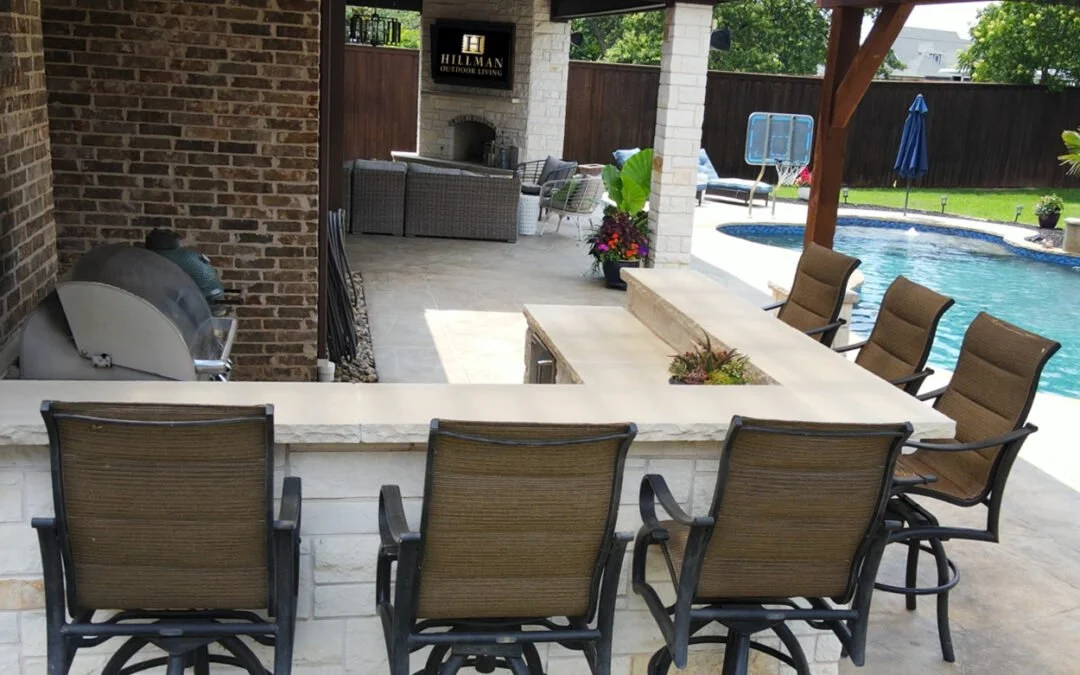Designing an Outdoor Kitchen: Tips and Tricks for Functionality and Aesthetics
A Comprehensive Guide: Outdoor Kitchen Countertops
An outdoor kitchen is more than just a place to cook; it is an extension of your home and a hub for entertaining guests. With an outdoor kitchen, you can create an inviting and functional space that maximizes both aesthetics and functionality. Here are some tips and tricks to help you designing an outdoor kitchen that will expand your living space, add value to your home, and improve your lifestyle.
Layout
When designing your outdoor kitchen, consider the layout carefully. The three main options are L-shaped, U-shaped, and straight-line designs. An L-shaped layout is ideal for those who want more counter space and better traffic flow. This layout also allows for more seating and socializing areas. A U-shaped design maximizes counter space and provides a natural boundary for the cooking area. A straight-line design is more space-efficient and easier to clean, making it a popular option for smaller outdoor kitchens.
Appliances
Outdoor kitchens are all about functionality, and appliances are a crucial component. Built-in grills, side burners, refrigerators, and sinks can enhance the functionality of your outdoor kitchen and make it more convenient to use. A built-in grill is a must-have for any outdoor kitchen, as it is the centerpiece of the cooking area. Side burners are also useful, as they allow you to cook side dishes while grilling. A refrigerator is perfect for keeping drinks and food cold without having to run back inside the house. Finally, a sink is essential for washing hands, rinsing vegetables, and cleaning cooking utensils.
Materials
When choosing materials for your outdoor kitchen, consider durability, ease of maintenance, and aesthetics. Stainless steel is a popular choice because it is durable, easy to clean, and looks sleek and modern. Concrete is another durable option that can be molded into any shape or size. Stone, such as granite, is also a popular choice as it is easy to clean and adds a natural look to your outdoor kitchen.
Lighting
Lighting is an often overlooked aspect of outdoor kitchen design. Adequate lighting is essential for safety and functionality, especially if you plan on using your outdoor kitchen at night. Consider installing lights above the cooking area, along walkways, and in seating areas. This will create a warm and inviting ambiance for entertaining guests.
In conclusion, designing an outdoor kitchen is an exciting project that can greatly enhance your lifestyle. By considering the layout, appliances, materials, and lighting, you can create a space that is both functional and beautiful. Whether you are looking to expand your living space or add value to your home, an outdoor kitchen is a worthwhile investment that will provide years of enjoyment.
About the Author
Michael Hillman started Hillman Outdoor Living as a high schooler over two decades ago. His entrepreneurial spirit led him to mow lawns for extra cash, which he did throughout college.
After college graduation, Hillman transitioned his business into a commercial property management company and pivoted again when he began offering primarily landscape design and build services. Today, Hillman operates with a team of dedicated and talented professionals providing exceptional service.

